Last Modified 03/01/2019

Elephant Reference
|
Last Modified 03/01/2019  Elephant Reference
|
The following page is devoted to elephants and their differences, mainly just a quick guide for color and types.
Quick Compare modern elephants side by side:
| Asiatic Elephant |
African Bush Elephant |
 Photos by Tom Moon |
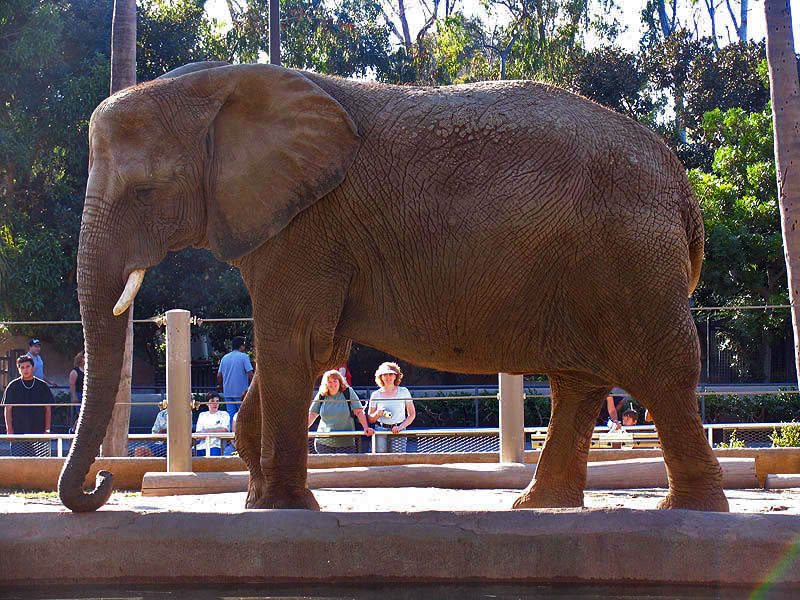 |
Here you can see the key differences in elephant anatomy from the African to the Asian. Both of these are females from the San Diego Zoo.The largest male African elephant ever measured came in at 13 feet at the shoulder- unfortunately it seems that many miniature companies make their elephants this size, which is the outside extreme. The largest bull Asian elephants come in at around 11 feet at the shoulder. Asian females do not have exposed tusks.
More elephant info: http://www.sandiegozoo.org/animalbytes/t-elephant.html
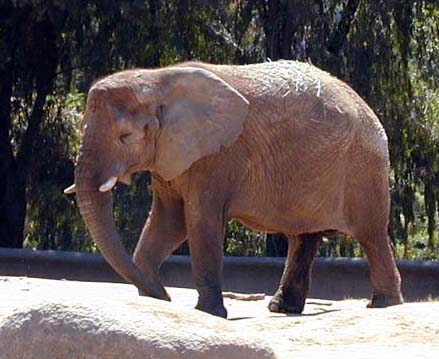 |
One
thing that gets confused often is whether an elephant is African
or Asian. The modern concept is that the African elephant is
bigger than an Indian or Asian beast. This is true, the African
bush elephant is the largest land animal.
Ancient armies rarely used the larger but difficult to domesticate African bush elephants. They used smaller African forest elephants of a breed that are now extinct in North Africa. A variety has been found in the Congo that is linked genetically with the smaller African elephants that were used by the Ptolemies, Kushites, Numidians, Carthage, and Rome. New
research into genetic archeology has revealed that some of the
larger African elephants may have been in the Eretria area and
may have been used by the Ptolemies, and may have been captured
and traded by the Nabataeans. So it is possible- but rare that
the large Savannah elephants would find their way into
Carthaginian or Ptolemaic armies. The elephant to
the left is an African Savannah elephant and shows the general
traits of the African breeds. This female lives at the San Diego
Zoo Safari Park, where I took these photos. |
 |
Here the gang is out for play.... showing their swayed backs and ear shapes. |
| This image shows the big
Africans from the San Diego Safari Park. This shot is from the San
Diego Zoo journal "ZooNews". https://zoonooz.sandiegozoo.org/ |
 |
These are Asian elephants, grouped together. This shows the size difference between the bull male and the cows. Note how the arch of the spine is higher towards the front on Asian elephants. The male seems to be humming the tune "I'm in the mood for love".. but the ladies seem more interested in gossip :) |
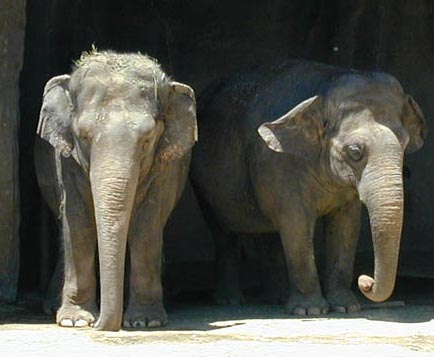 |
Here we see the head shape of
the Asian breed and can be compared to the Africans above. This s a good place to pause and note coloring. Elephants are brown or dark grey when wet, but they throw dirt all over themselves to protect their skin from bugs and the sun. This leaves them in all sorts of multi-toned earth shades. Depending on how the light is hitting them they will appear grey, brown or olive as their massive bodies reflect the green grass. Note also how much less wrinkled the trunk is than the African variety. The ears are much smaller and more floppy and folded, and with distinctive shape difference from Africans. |
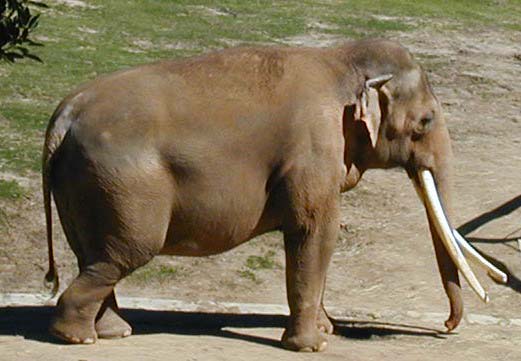 |
Here is the big tusker at the
WAP, he dispels the myth that Indian or Asian elephants have
smaller tusks than African ones. These are very impressive.
Note, they are teeth and not horns. It's sad that elephants in the
wild will be extinct soon, too many people or too many people
taking ivory illegally.
I was sad enough that these impressive animals were dragged into battles of men along with dogs, and horses, but now to see them slowly being rubbed out or pushed into zoos and preserves... oh well I can only hope I'm gone before the elephants are. One of the new African herd at the Safari
Park had a baby in captivity (a rare event, but she was in
gestation in a park in Africa and was going to be culled). The
new herd of seven elephants is very impressive to see. |
Baby African Elephant:

Currently more than eight elephants have been born
at the Safari Park.
Here is one of the new babies born in 2018, and the family (below).
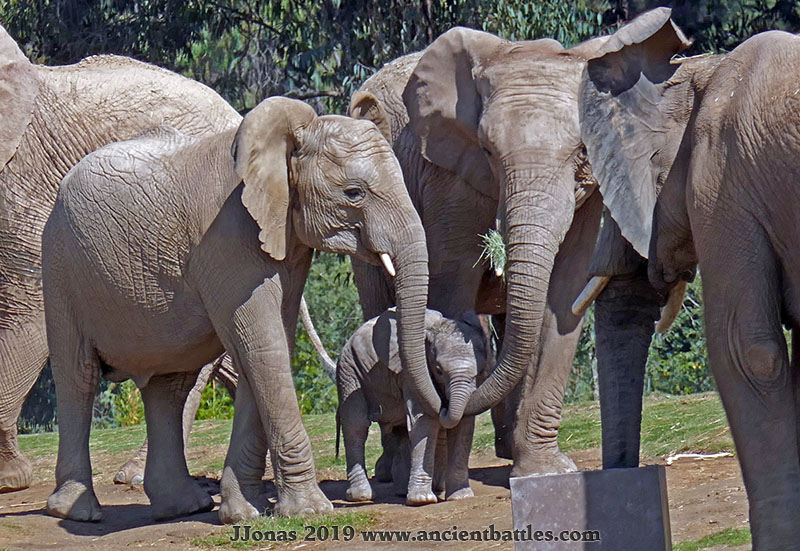 African vs. Asian elephants at the battle of Raphia 217 BCE 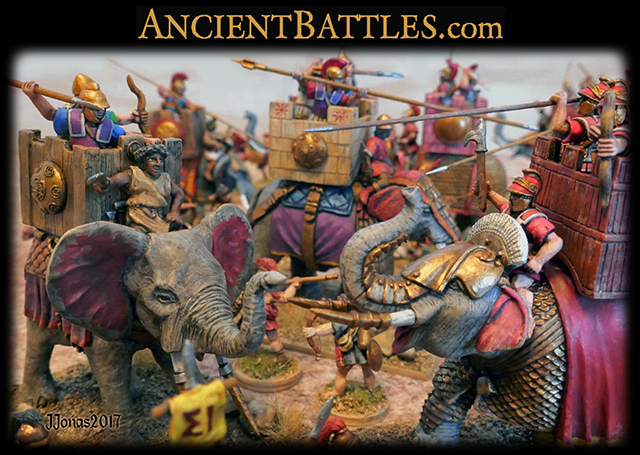 African Elephant size compare with Asian:
The species of North
African elephant use by Carthage, Rome, and the Ptolemaic Empire
were smaller than the Savannah or Bush elephantsknown today.
Elephant Details:
|
|
More on elephant comparisons: https://africafreak.com/african-vs-asian-elephant-guide Elephant Power:  |
This
is a very tragic thing I saw on the internet, and felt it was
relevant for wargamers. This man has been killed by his elephant as it went berserk. Elephant handler is still one of the most dangerous jobs on the planet, and whatever happened to cause this event has cost this man his life. But I felt that even though it is kind of morbid, that is shows the massive power of the elephant and how it could literally toss soldiers around like rag dolls, as was described at the battle of the Hydaspes.
Of course this also explains why people and elephants don't get along on those frontiers where fields are raided and destroyed, and people are killed defending their food from animals forced off their usual lands by drought or population pressures. It sure shows the fear that such an animal could cause when one is only armed with a sword or pointy stick. There's a few more differences between African and Asian elephants I'll get to another day. |
Other links:
http://www.travelblog.org/Asia/Thailand/Bangkok/blog-59455.html
http://library.thinkquest.org/C0122667/india/images/iw_ele_c.jpg
http://www.elephantcountryweb.com/Elliestories.html
Sources:
Polybius, “The Histories”, V.82.1
Pliny the Elder. “The Natural History”
H. H. Scullard, “The Elephant in the Greek & Roman World”, Cornell
University Press, 1974.
J. P. Mahaffy, “The Army of Ptolemy IV at Raphia”, 1899
HERMATHENA Vol. X.
Slingshot Magazine September 1995 Issue 181, “The Elephant
Forum”(pages 32-35), Authors-
Michael Young, Simon MacDowell, Phil Barker, Justin
Taylor, John Bailey, Philip Sabin, Dave Letts.
Slingshot Magazine Issue 90, July 1980, “The Elephant in the
Mediterranean Wars”, Russel King.
Michael B. Charles, “Elephant Size in Antiquity - DNA Evidence and the
Battle of Raphia”, Historia, 2016/1, 53-65.
Rance, Philip, "Elephants in Warfare in Late Antiquity”, Acta Antiqua
Academiae Scientiarum Hungaricae 43 (2003) 355-384.
http://johnmckay.blogspot.com/2014/01/the-elephants-of-raphia-and-gash-barka.html
Rance, Philip, "Hannibal, Elephants and Turrets in Suda Θ 438 [Polybius
Fr. 162B] – An Unidentified Fragment of Diodorus", Classical Quarterly
59.1 (2009) 91-111.
“Pergamon and the Hellenistic Kingdoms of the Ancient World”, by Carlos
A. Picón and Seán Hemingway
The Metropolitan Museum of Art, 2016
ElephantVoices.org, Elephant Terms Glossary,
https://www.elephantvoices.org/multimedia-resources/elephant-terms-glossary.html
|
Edited 03/2019
|